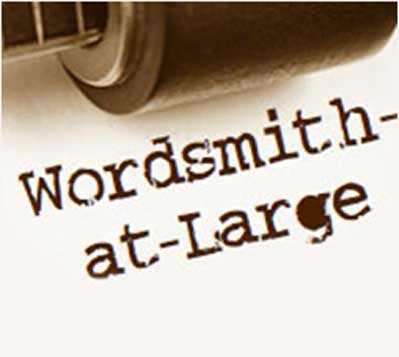Even though guns and ammo aren’t involved, I think it’s safe to say we are at war today. We just can’t see the enemy. It’s not wearing a uniform or carrying out maneuvers under a particular banner.
Alas, we do have brave “soldiers” on the front lines. The weapons medical personnel are using to combat the enemy won’t launch missiles, but those ventilators do pump oxygen into infected lungs with great speed and accuracy. And often that battle is won. Unfortunately, not every time, though. There are too many casualties already.
Everyone on the literal home front is hopefully making whatever sacrifices they can to ensure this is a quick war with a worldwide victory. Some are taking up the reigns as parent-teachers. Many are tightening belts due to loss of income. Mingling with anyone outside one’s own domicile is verboten, and keeping at least six feet away from passers-by is sacrosanct, even in the fresh air of spring.
Of course, there are many, many more disruptions of life going on besides these basics. Worshipping with fellow believers is now virtual. Staying in touch with family and friends means staring at a computer screen filled with twenty or thirty little squares. Going to the grocery store means planning meals for at least a week or more, donning a mask and maybe gloves, being careful to avoid other shoppers, and wiping off EVERYTHING with bleach-soaked paper towels before anything gets put away at home. And lots and lots and lots of hand-washing. (Never thought I’d get sick and tired of the “Happy Birthday” song.)
Given the sacrifices of this war, I thought I’d get a perspective on the ones today versus those endured by the Greatest Generation in World War II. So, I went straight to a source close to me who was able to give me a first-person account of what it was like at home in early 1940s America. My mom was a young teenager during those years.
Here are several things she remembered vividly. Meat, butter, and sugar were all heavily rationed. Each family got ration books with stamps inside. She remembered blue and red “buttons” she called them, but research shows there were black and white and other ones as well, corresponding to different products. The red ones, it turns out, were for butter, margarine, meats, cheese, and canned fish. The blue ones were for canned/dried/frozen fruits and vegetables, and for processed foods.
Mom said she remembers a lot of meatless meals. “My mother was very creative in the kitchen,” she said. “She would just use what was available.” Beans were often part of whatever my grandma threw together.
Sugar was one of the first items rationed. I asked about things like birthday cakes and other sweets. She said she doesn’t remember not having a cake, but, “We just got used to not having much sugar.”
Gas rationing was a big deal. Those families that owned cars were only allowed to use their ration stamps for a certain number of gallons. “There weren’t a whole lot of pleasure trips taken,” said Mom. Her family was fortunate in that her dad was a veterinarian, and in the agrarian area that surrounded her small Indiana town, his job was considered essential. So, he could get more gas than the average car owner.
I asked about things like dairy, fresh fruits, vegetables, and even clothes. She said she doesn’t remember any of those being rationed, except for nylons for women. I imagine her big sister was particularly upset about that. Mom was more of a bobby-soxer in those days.
You couldn’t get a new car even if you wanted one. All the manufacturers were making war vehicles. That would have bothered mom’s older brother and dad more than it did her. “A lot of people rode their bikes wherever they wanted to go. Or we just walked,” she said.
There were other items on the rationing list. Rubber was scarce. Mom remembers school contests to gather scrap for recycling. Fats and oils were limited. And coffee drinkers were severely impacted by rationing. Nobody threw out any grounds. Mom said she and everyone else “just got used to not having things.”
They got through their trial. We’ll get through ours. Now, on the lighter side, what WASN’T on Mom’s WWII list were things such as toilet paper, aerosol cleaners and paper towels. But, to tell you the truth, I think I’d rather be fighting the masses for THOSE items instead of sugar. Having no meat is one thing. But I’m not sure I could fight this current war for long without ice cream . . . and chocolate sauce.
©MMXX. William J. Lewis, III – Freelance Writer


Leave A Comment